Bone Conduction Headphones: The Future of Listening or Another Fad?
What if you can listen to music for long periods without damaging your ears? What if you don’t need to put the audio accessory over your ears? That is the promise of bone conduction headphones, but is all the hearsay true?
Unlike regular headphones, bone conduction earphones vibrate the bone near your ears to produce sound. Consequently, they leave your ears open, so you can remain aware of your surroundings while listening. Some promote the gadget as a better alternative to conventional headphones.
We will discuss bone conduction headphones to separate rumors from their real benefits and risks. Also, we will cover some of the most popular options on the market. As a result, you can decide whether to purchase a pair or stick to your old audio buds.
How do bone conduction headphones work?
Bone conduction headphones take advantage of how your ears work. That is why we must discuss how human ears function before we explain how the gadget works.
Sound enters your ear and passes through the outer and middle ear until it reaches the cochlea. The sound vibrates the fluid inside that tiny spiral-shaped bone and sends signals to your brain.
As a result, we perceive sound. That is why we place conventional headphones in our ears or over them to send music directly into them.
Bone conduction headphones do not play music directly into your ears. Instead, they vibrate the bones in your face so that it ripples to the temporal bone.
It is the bone surrounding the cochlea. Once it vibrates, it shakes the cochlear fluid, sending signals to your brain so that you can hear music.
You may also like: The Best Noise Cancelling Headphones
You may have never seen headphones use bone conduction technology, but other industries have used them for years.
For example, hearing aids use to help people hear again. Also, the US Army’s Aberdeen Proving Ground integrated bone conduction for personnel radio communication.
US soldiers use earpieces that do not cover their ears. As a result, they can receive orders while maintaining situational awareness on the battlefield.
Pros and cons of bone conduction headphones
Bone conduction headphones are a relatively recent trend, so we need to determine the full extent of their benefits and risks. That is why I lumped them into one segment of this article.
Let us start with the positives. The main reason why people love bone conduction earphones is they let users hear background noise.
They are especially useful for outdoor activities that require you to be aware of your surroundings. For example, cyclists could jam into these while ensuring they hear nearby traffic and avoid potential danger.
Also, bone conduction headphones keep your ears clean. One issue with conventional earphones is that they can accumulate dirt.
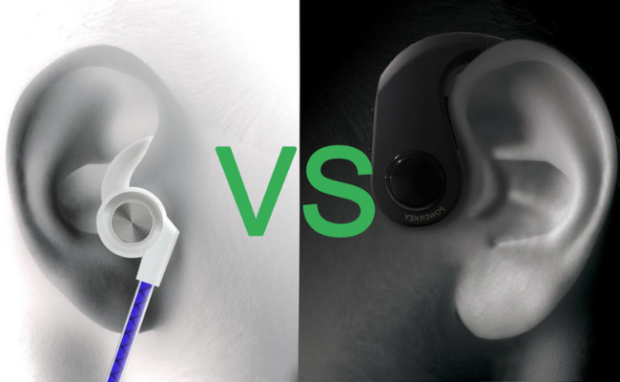
Photo Credit: leaglee.com
On-ear headphones may absorb sweat, making them moist and sticky after prolonged exposure. Meanwhile, in-ear headphones may gather gunk that may enter your ears.
However, bone conduction headphones offer poorer sound quality compared to regular earphones. Even the most expensive bone conduction accessories cannot compare to mid-range conventional ones.
Regular headphones directly transmit sound to your ears. Meanwhile, sound from bone conduction earphones passes through several layers of bone and tissue before reaching your cochlea, greatly diminishing the quality.
Contrary to popular belief, bone conduction headphones are not safer than conventional ones. They pose the same risk of hearing loss if you listen at high volumes for extended periods.
These audio accessories may also leak sound, which may distract others. That is why it is better to use these devices outdoors, where the leaked sound would become negligible.
The best bone conduction headphones on the market
Bone conduction headphones have recently become popular, yet numerous options are available. Choose only the best, especially if this is your first time using the device.
High-quality earphones let you appreciate the technology at its best. More importantly, they offer nifty features like a high waterproof rating and internal storage!
Let us cover five of the best bone conduction headphones on the market. Note that their prices may have changed by the time you read this article:
- Shokz OpenRun Pro
- Mojawa Mojo1
- Tayogo S2
- Panadia DG08
- H2O Audio Sonar
1. Shokz OpenRun Pro
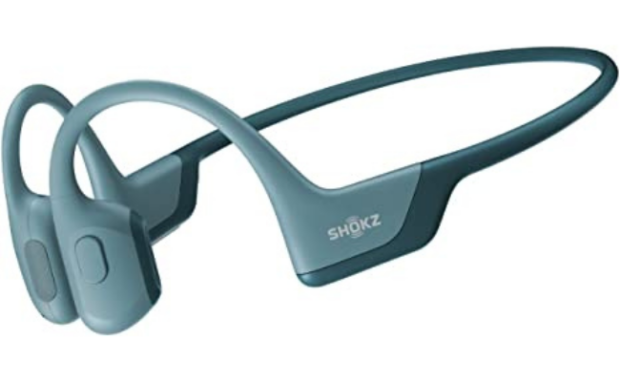
Photo Credit: amazon.com
Price: $154.69
The Shokz OpenRun Pro headphones are excellent for listening to music, taking calls, and working out. They are durable, well-designed, and our top choice for bone conduction headphones.
The TurboPitch™ technology and dual bass enhancers provide extra bass for genres like EDM and Hip-Hop. As a result, they stand out among other bone conduction headphones.
They are also 20% smaller than previous models, providing greater comfort and ease of use. Moreover, the OpenRun’s waterproof rating lets it function properly during rain.
2. Mojawa Mojo1
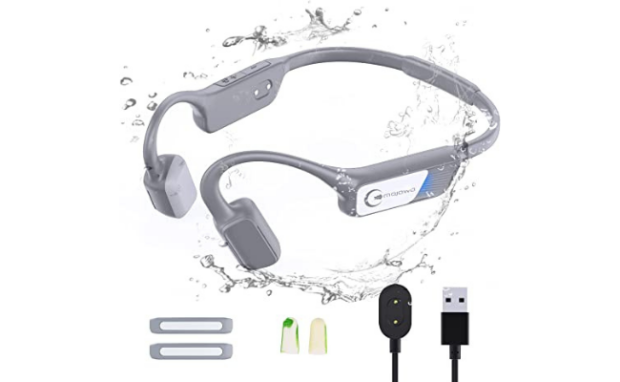
Photo Credit: amazon.com
Price: $129.99
The Mojawa Mojo1 is a pair of bone conduction headphones suitable for active individuals. They have a durable and flexible design, great sound quality with reduced leakage, and a safety feature for night jogging.
The sound quality is dynamic, with magnetic bass vibrators, larger transducers, and a more powerful listening experience. They are also comfortable for long hours of office work, with a built-in mic and smart noise-canceling feature.
Also, the Mojo1 is a great choice for nighttime jogging. It offers a pair of Alula Reflective Strips to attach to the headphones to ensure people can see you in the dark. Moreover, the Mojo1’s IP67 rating lets it function properly during rain.
3. Tayogo S2
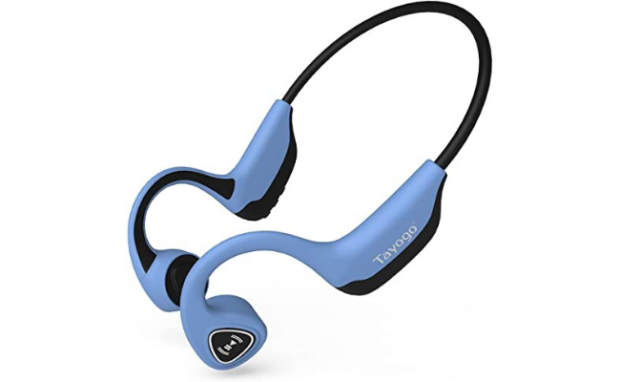
Photo Credit: amazon.com
Price: $39.99
The Tayogo S2 bone conduction headphones are a great budget option. Like the other examples, it has good sound quality and water-resistant features.
They are comfortable to wear with their wrap-around design and snug silicone pads that stay in place during workouts. As a result, the Tayogo ensures optimum comfort during your daily routine.
The headphones are flexible and IPX5-rated for protection against water splashes in any direction. Moreover, they provide up to six hours of music playback on a single charge.
4. Panadia DG08
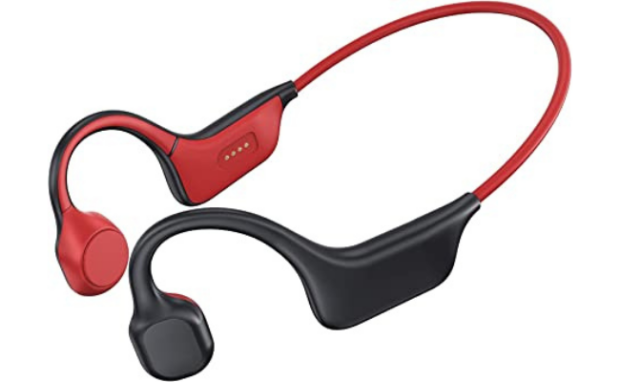
Photo Credit: amazon.com
Price: $45.95
The Panadia DG08 headphones are more affordable than the Tayogo S2 bone conduction headphones. They weigh only 26 grams, lighter than the Tayogo S2.
Both headphones offer 6 hours of battery life and button controls for media playback and calls. Also, the audio quality is similar to the Tayogo S2.
The Panadia DG08 has a higher water resistance rating of IPX7 compared to the Tayogo S2’s IPX5. Overall, the Panadia is a great choice for budget bone conduction headphones.
5. H2O Audio Sonar
Price: $99.99
The H2O Audio Sonar headphones are great for swimmers and water enthusiasts. They have a compact design that fits well with goggles and a built-in MP3 player with ample memory for listening to music underwater.
These headphones have a silicone strap and rubberized transducers, ensuring a secure and comfortable fit. Even better, they have built-in slots that let you slip your goggles strap through them.
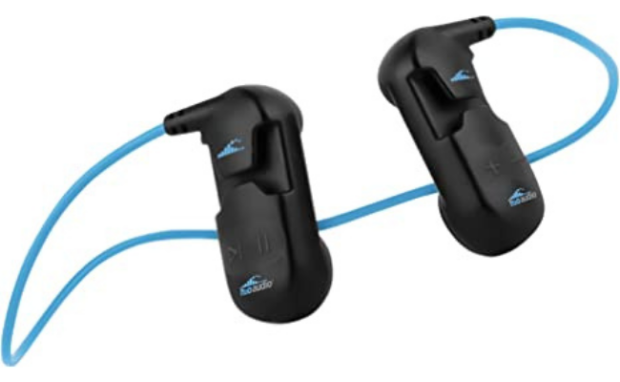
Photo Credit: amazon.com
The H2O Audio Sonar headphones have an 8GB memory capacity for storing up to 2,000 songs. Also, you can easily add songs from your computer with a USB cable.
Traditional vs. bone conduction headphones: Which is better?
Bone conduction headphones are a decent choice if you need to be aware of your surroundings while listening to music. It may come in handy if your daily workouts involve cycling or jogging in the streets.
However, they do not offer other advantages over conventional headphones. Also, you can find their additional features in cheaper conventional headphones.
For example, the RR SPORTS Open Ear Headphones offer $99 H2O Audio Sonar’s internal storage for only $28.99. The former is also waterproof enough to function properly in the rain.
Traditional earphones have been around for years, so numerous options are available. Meanwhile, bone conduction headphones offer limited options because it is a recent trend.
Related Articles
Conclusion
Bone conduction headphones vibrate the bones near your ears to produce sound. They leave your ears open, so you can still be aware of your surroundings while listening to music.
Still, they pose the same risk of hearing loss if you play at high volume. These headphones also deliver poorer sound quality than traditional headphones.
Nevertheless, they are still worth trying due to their budget-friendly options. Follow Inquirer Tech for the latest gadgets and digital trends.
Frequently asked questions
Is it good to use bone conduction headphones?
Bone conduction headphones leave your ears open so that you can still hear things around you. As a result, you can avoid running into people and getting hit by objects. However, they can still damage your ears like conventional headphones.
What are the disadvantages of bone conduction headphones?
Bone conduction headphones usually have worse audio quality than traditional headphones. It creates sound by vibrating bones near your ears, so the additional layers significantly ruin the quality. Also, you don’t have numerous options because it is a recent trend.
Are there bone conduction headphones with noise canceling?
Some bone conduction headphones have noise canceling so that users can answer calls on the go. They use various technologies to ensure people can hear you clearly while wearing them. However, they usually do not have active and passive noise canceling in traditional headphones.